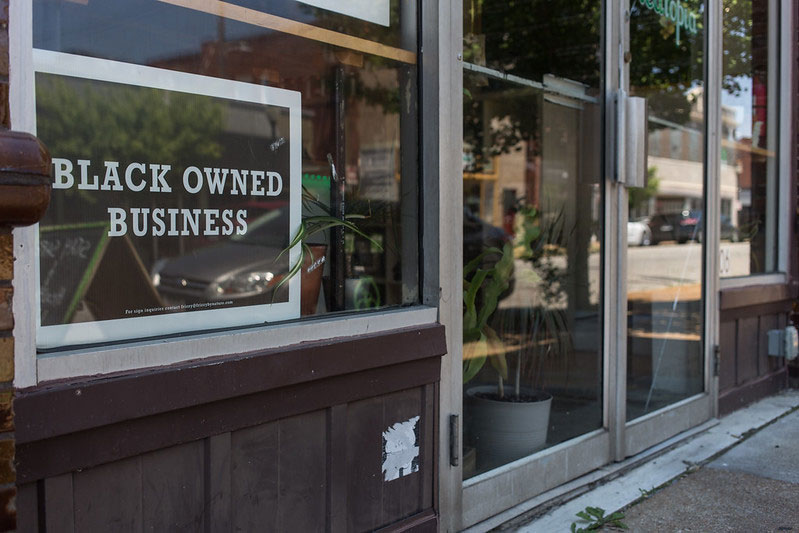
In May, LISC (Local Initiatives Support Corporation) announced that its Black Economic Development Fund (BEDF) had met its $250 million fundraising goal. BEDF aims to convert corporations’ public racial equity fund commitment into investments that can help boost the capacity of Black-owned economic institutions. The fund is part of LISC’s Project 10X, which seeks to invest $1 billion over 10 years to reduce the racial wealth gap. To date, $400 million toward that goal has been raised.
At NPQ, we have covered LISC before, including an in-depth profile about a year ago. Prior to the pandemic, the nonprofit had begun to shift to focus on dismantling structural racism directly, rather than aiming to reduce racial inequality indirectly as it had done for much of its history.
As Annie Donovan, LISC’s chief operating officer, explained, community development had often taken a “race neutral” approach. But this can reinforce existing structural racism. For instance, Donovan, who used to direct the federal Community Development Financial Institutions (CDFI) Fund, notes that white-owned CDFIs win most New Markets Tax Credit awards because they have a “track record” that most CDFIs directed by people of color lack. To be race neutral, Donovan observed, “requires you to ignore our history completely.… We haven’t created a level playing field, and we need to own that.”
The uprising against anti-Black racism that followed the murder of George Floyd last May has pushed the field to do more, as George Ashton, managing director of strategic investments at LISC and manager of the BEDF, readily acknowledges. As Ashton explains, “On the heels of George Floyd, Breonna Taylor, a lot of folks were trying to figure out how we can solve some of the challenges that led to the violence we were seeing at the hands of police officers.”
LISC saw an opportunity to boost capital for Black businesses by tapping into new money that many corporations are now publicly committing to address structural racism. But there was a problem in how many corporations were doing that. One popular approach among Fortune 500 companies was to deposit money into Black-owned banks, but this only helps if the banks can convert those deposits into income-earning loans. Deposits themselves, notes Ashton, are “actually a liability.”
LISC’s strategy is different. The idea, Ashton explains, is to “help the banks and push money into black businesses and black anchor institutions like HBCUs [historically black colleges and universities].” A design challenge, however, notes Ashton, is that the time horizons of corporate America and community economic development do not align well. Corporations prefer not to lock down cash for more than two years, but community economic development projects often last 15–20 years.
The BEDF instrument splits the difference with a seven-year fund and a minimum five-year commitment by investors. How does this work? “We had to create a creative redemption strategy,” Ashton explains. This gives corporations an exit to cash out if they need to. On the community development side, five years is not enough time for some projects, but does work for some of them. “At five years,” Ashton notes, “you get to the shorter end of business investing. In our first deals, we have done a business-level investing in Black developers secured in part by the real estate that they are developing.”
Ashton also says the time horizon could lengthen, if, as he anticipates, many investments are rolled over. “If this works out, I can’t foresee any reason our investors wouldn’t want to keep it going and expand it,” Ashton says. Because the money being deployed in the fund is from pools of money typically held as cash and therefore not seeking a high return, modest earnings should be sufficient to sustain BEDF.
Investments from the fund will go into one of four categories: 1) Black-owned businesses, 2) Black-owned real estate developers, 3) Black-owned banks and/or CDFIs, and 4) Black-led anchor institutions (mostly HBCUs).
Sign up for our free newsletters
Subscribe to NPQ's newsletters to have our top stories delivered directly to your inbox.
By signing up, you agree to our privacy policy and terms of use, and to receive messages from NPQ and our partners.
To date, the fund has made five investments totaling $18.8 million—two in Black-owned financial institutions and three in Black-owned real estate firms. By year-end, the fund aims to make 20 placements, meaning that by year-end 2021 close to 30 percent of the $250 million will have been invested.
The investments made are large, ranging from $1 million to $10 million. It is “not the same thing as small business,” Ashton notes. Rather, the focus is on “middle market” investments. The hope is that these investments in larger Black-owned institutions will benefit Black small business indirectly. For instance, Black banks receiving BEDF support can extend more credit to Black-owned small businesses. And larger Black businesses, real estate firms, and anchor institutions often support Black small businesses through procurement and subcontracting.
The first set of five investments were placed in the following firms:
- Optus Bank; Columbia, SC; $4 million: The Black-owned bank, founded in 1921, is also a CDFI and makes 90 percent of its loans to women-owned and people-of-color owned businesses.
- Unity National Bank; Houston, TX; $3 million: Unity is the only Black-owned bank in Texas (it also operates in Atlanta).
- Dantes Partners; Washington, DC; $5 million: The loan is expected to help the Black-owned firm build 3,000 additional units of affordable housing in the next few years, which supporting a 60-person firm, 85 percent of whose employees are Black.
- Bridging the Gap (BTG); Pittsburgh, PA; $1.5 million: The pre-development loan is expected to support 171 mixed-income apartments to Pittsburgh’s Uptown district.
- Phoenix Adams Rising; Jacksonville, FL; $5.3 million: BEDF’s bridge loan is helping the project’s sponsor, Eugene Profit, stabilize a six-story apartment building for students at Florida State College of Jacksonville, a third of whom identify as Black Americans.
What Impact Will the Fund Have?
Of course, the fund’s investments directly support employment by Black-owned firms and the expansion of Black-owned business ecosystems. But Ashton thinks BEDF’s impact could be even larger.
“Holistically, we are focused on the gap, the massive gap between the haves and have-notes. That is the one theme that runs through most of our work,” Ashton notes.
Ashton adds that LISC has traditionally focused on affordable housing and alleviating poverty. Those efforts at LISC continue, but BEDF is a different concept, Ashton explains. “It is not the case that everyone is poor because they lack access to capital,” Ashton says. More specific strategies, Ashton contends, can lead to “more robust solutions” that support more systemic change.
Still, the wealth gap is so large that it begs the question of what any single fund can accomplish. In From Here to Equality: Reparations for Black Americans, published by University of North Carolina Press last year, William Darity and Kirsten Mullen estimate that the US racial wealth gap is on the order of $15 trillion. Evidently, $250 million is a tiny percentage of that.
Ashton says the fund aims to elevate enough examples of successful Black-owned economic institutions that a “tipping point” is reached. Ashton cites the integration of Major League Baseball as one example of this process: “After one team had a first Black baseball player, the system corrected itself.” But that story is actually more complicated; it took 12 years after Jackie Robinson started playing for the Dodgers until the Boston Red Sox became the last team to hire a Black player and another 16 years before Frank Robinson became the first Black manager.
The ultimate impact of BEDF remains to be seen. That said, funds like BEDF clearly reinforce vital economic infrastructure in Black communities. It will be important to follow these experiments in the years to come.












